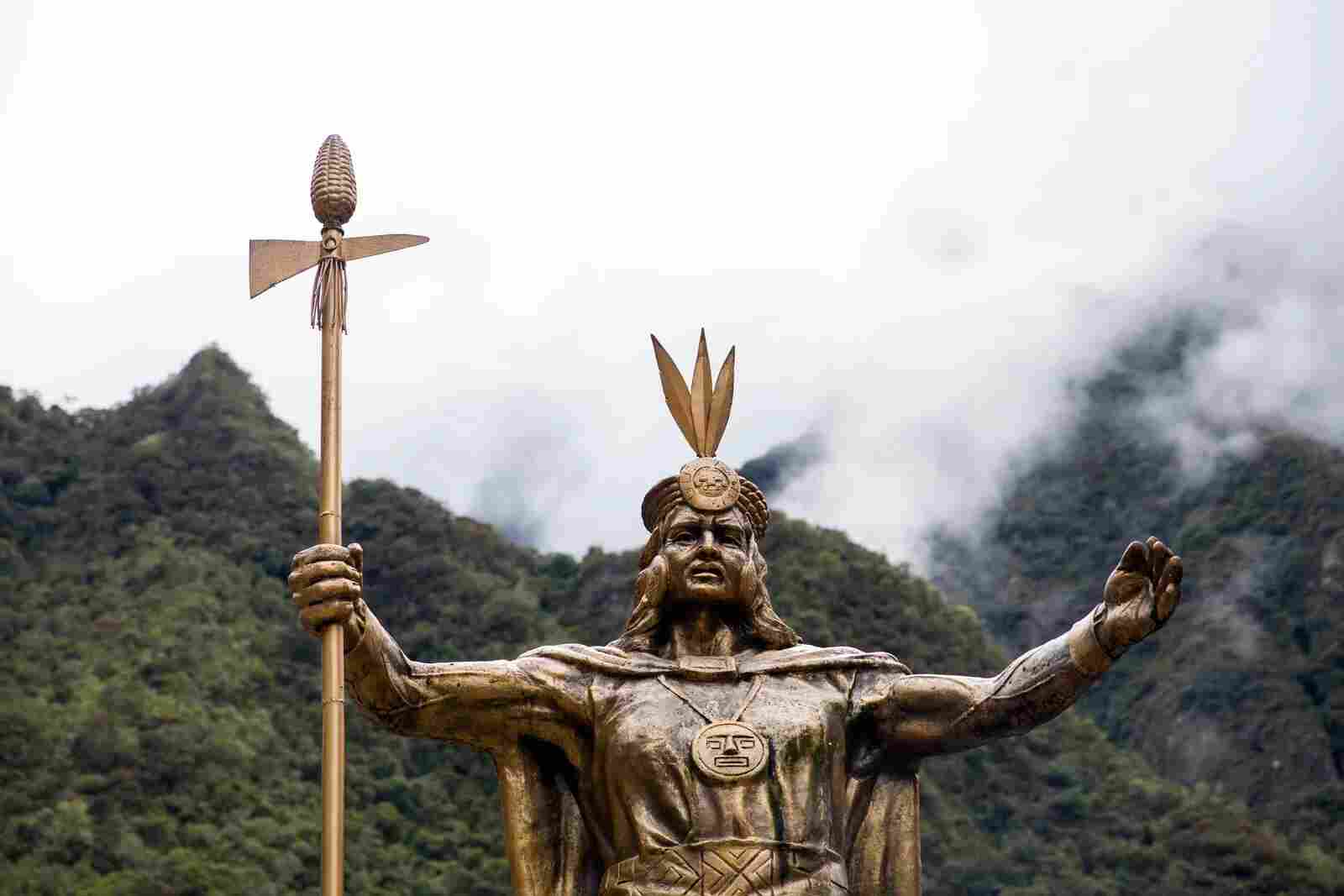
The Lord of the Inca Civilization statue is a fascinating landmark that carries immense historical and cultural significance. This iconic statue, situated in the heart of the ancient Inca city of Cusco, Peru, captivates visitors with its grandeur and mystery. As an expert in SEO and Landmarks, I am excited to share with you ten intriguing facts about this remarkable statue. From its mythical origins to its architectural marvel, this article will take you on a journey through the captivating story of the Lord of the Inca Civilization. Discover the secrets behind its creation, its symbolic meaning, and the enduring legacy it has left behind for generations to admire and appreciate.
Key Takeaways:
- The Lord of the Inca Civilization statue is a massive, ancient masterpiece carved from a single block of stone, representing power and divinity in Inca culture.
- This awe-inspiring statue, adorned with intricate engravings, continues to attract tourists and inspire art and literature, offering a fascinating glimpse into the rich history of the Inca civilization.
The Lord of the Inca Civilization statue is an ancient masterpiece.
Steeped in history and mystery, this remarkable statue captivates the hearts and minds of all who lay their eyes upon it. Its significance in the Inca civilization cannot be understated, as it stands as a testament to their rich culture and architectural prowess.
The statue was carved from a single block of stone.
Crafted with incredible precision and skill, this awe-inspiring statue was painstakingly carved from a single massive block of stone. The level of detail and intricacy achieved in this process is a testament to the craftsmanship of the Inca artisans who created it.
It is believed to represent an important deity or ruler.
Though the exact identity of the figure depicted in the statue remains a subject of debate, many experts believe that it represents a significant deity or revered ruler in the Inca culture. The statue’s regal presence and commanding expression suggest its association with power and authority.
The statue weighs several tons.
This colossal masterpiece is a testament to the strength and engineering prowess of the Inca civilization. Weighing several tons, the Lord of the Inca Civilization statue showcases the remarkable ability of the Inca people to manipulate and transport such massive stone structures.
It was discovered by archaeologists in the late 20th century.
The discovery of the Lord of the Inca Civilization statue took place in the late 20th century, unveiling a hidden treasure from the depths of history. This finding sparked immense excitement and furthered our understanding of the Inca civilization and their artistic achievements.
The statue is adorned with intricate engravings and symbols.
Upon closer examination, one can marvel at the exquisite engravings and symbols that adorn the surface of the Lord of the Inca Civilization statue. These intricate designs offer glimpses into the sacred beliefs and cultural practices of the Inca people.
It is considered a symbol of power and divinity.
The Lord of the Inca Civilization statue holds a significant symbolic value in Inca culture. It is widely regarded as a representation of power, divinity, and the connection between the spiritual and earthly realms. Its presence evokes a sense of awe and reverence.
Countless hours went into the creation of the statue.
The creation of such a remarkable work of art required immense dedication and countless hours of labor. Skilled craftsmen spent years meticulously shaping and carving the stone with precision and attention to detail, resulting in this timeless masterpiece.
The statue has inspired countless works of art and literature.
The Lord of the Inca Civilization statue has served as a muse for artists, writers, and poets throughout the centuries. Its grandeur and enigmatic aura have inspired numerous artistic interpretations, further cementing its status as an iconic symbol of the Inca civilization.
It continues to attract tourists from around the world.
Even to this day, the Lord of the Inca Civilization statue remains a major tourist attraction, drawing visitors from all corners of the globe. Its historical significance, architectural brilliance, and enigmatic nature make it a must-see for those seeking to unravel the mysteries of the Inca civilization.
Conclusion
In conclusion, The Lord of the Inca Civilization statue is a remarkable piece of art that offers a captivating glimpse into the rich history and culture of the Inca civilization. Its intricate craftsmanship, grandiosity, and symbolic significance make it an intriguing subject for study and exploration. From its mysterious origins to its enduring legacy, this statue continues to fascinate historians, archaeologists, and art enthusiasts alike. Whether you appreciate its artistic beauty or seek to unravel the secrets behind its creation, the Lord of the Inca Civilization statue stands as a testament to the ingenuity and craftsmanship of the ancient Inca people.
FAQs
1. Where is the Lord of the Inca Civilization statue located?
The Lord of the Inca Civilization statue is located in the Museum of Pre-Columbian Art in Cusco, Peru.
2. How old is the Lord of the Inca Civilization statue?
The statue dates back to the 15th century, during the reign of the Inca Empire.
3. What materials were used to create the Lord of the Inca Civilization statue?
The statue was sculpted from a single block of Andean travertine, a type of sedimentary rock commonly found in the region.
4. What is the significance of the Lord of the Inca Civilization statue?
The statue is believed to represent a deity or ruler from the Inca civilization and holds symbolic importance in their religious and political practices.
5. How tall is the Lord of the Inca Civilization statue?
The statue stands at approximately six feet tall (1.83 meters), showcasing its grandeur and commanding presence.
6. Can visitors take photographs of the statue?
Photography is generally allowed in the Museum of Pre-Columbian Art, but it is always best to check with the museum’s regulations and guidelines beforehand.
7. Are there any replicas or reproductions of the Lord of the Inca Civilization statue?
While there may be reproductions or replicas of the statue available, the original Lord of the Inca Civilization statue is housed in the Museum of Pre-Columbian Art in Cusco.
8. Is the Lord of the Inca Civilization statue considered a national treasure?
Yes, the statue is considered a national treasure of Peru and holds great cultural significance to the country’s heritage.
9. Are there any specific rituals or ceremonies associated with the statue?
There is limited information available about specific rituals or ceremonies associated with the statue, as much of the knowledge about Inca religious practices has been lost over time.
10. Can the public access the Museum of Pre-Columbian Art to view the statue?
Yes, the Museum of Pre-Columbian Art in Cusco is open to the public, allowing visitors to view the Lord of the Inca Civilization statue and other fascinating artifacts from the pre-Columbian era.
Was this page helpful?
Our commitment to delivering trustworthy and engaging content is at the heart of what we do. Each fact on our site is contributed by real users like you, bringing a wealth of diverse insights and information. To ensure the highest standards of accuracy and reliability, our dedicated editors meticulously review each submission. This process guarantees that the facts we share are not only fascinating but also credible. Trust in our commitment to quality and authenticity as you explore and learn with us.


